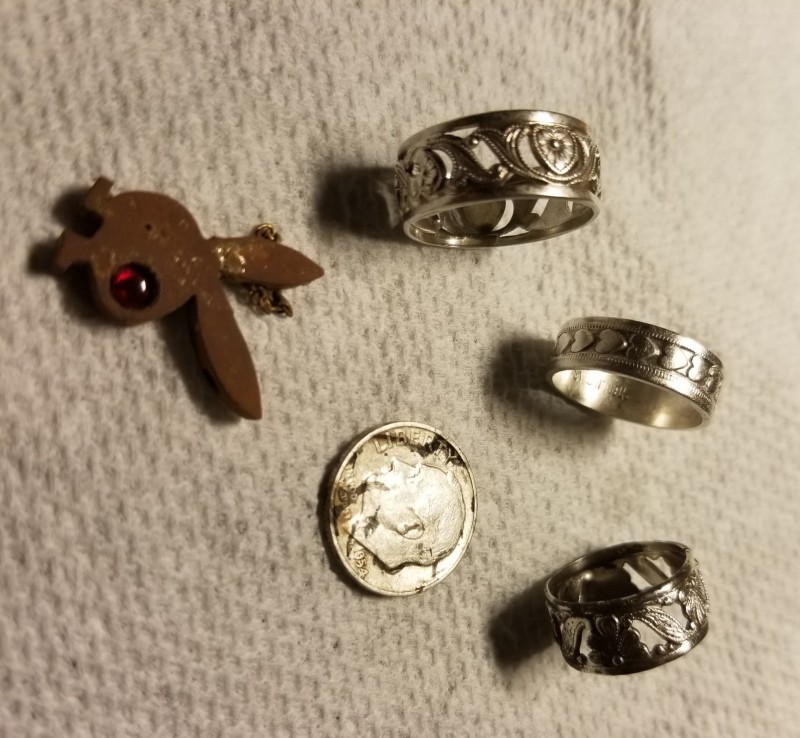Leaderboard
Popular Content
Showing content with the highest reputation on 05/22/2020 in all areas
-
So the other day my neighbor told me she lost part of her rosary when she was walking her dog. It was a multitude of events where her phone rang, kids ran out and the dog kind of pulled off enough that when she took her hand out of her pocket fast, it broke and flew across the grass near the sidewalk. She was able to find most of it but could not find the a piece that had a little cross on it with part of the chain and beads. This rosary really meant a lot to her. My neighbors know that I metal detect for gold but they did not ask me at first and tried themselves to find it, even going to point of borrowing a metal detector from their relatives. When they came back empty handed and I saw them in the driveway they told me the story. I said you should have just asked me, I would love to help! Plus for me I thought that this would be like leveling up in metal detecting skill set. I only hunt for jewelry when I go to FL to visit my folks, so I only get in maybe a few weeks of that. Plus I rarely detect in the parks, I just don't like all the people. So I wanted to know if I could really do this. So I asked her to show me some of the other parts of her rosary so I could get hear what the signal sounded like, what kind of ID number would show up, and how much sensitivity to use since it should be a surface find (it was only lost for a couple of days). Well I knew this was going to be a challenge cause the little cross came up around 15 and the chain was ferrous, I think it was a -4 all on the Equinox. I was not sure if the cross and the chain were still connected. Well when I got to the area she lost it, there was so much trash and EMI plus I could not discriminate because I was not sure if they were still connected or not, but i persevered. Knowing that I would not have to dig, helped eliminate a lot of targets too. Anyways it only took me about 20 mins and I found it! The cross was still connected to the chain, and when the signal came up it was a double blip of those exact numbers! I looked down and there it was. She was so excited and thankful and I was just as excited for her and knowing that I could do it! It was an absolute great feeling to help her out, I felt on top of the world at that moment. I would even say I felt a bigger high finding that for her vs when I find a nugget! Anyways here the pic.7 points
-
Yeah, it’s basically heading that way, especially here in the U.S. If gold was still $300 an ounce we’d already be done. People who say they are doing it for fun and adventure, not the value, for some reason are not out looking for things of no value instead. They could be looking for copper nuggets but few seem interested in that for some reason, even though it is as challenging and has just as much fun and adventure as gold detecting. The price does matter, and ever increasing prices have kept this ship afloat. And if gold breaks above $US2000 an ounce I expect we will see another electronic gold rush as people detect for the last remaining dribs and drabs on patches pounded for decades. Yes, there are virgin patches out there, but it’s the rare true prospectors out spending the weeks or months of non-producing detecting needed to find them. Ultimately it is legal access to ground that is the limit, and if gold prices spike everything available will get claimed up to the hilt. Competition will be fierce again. We lose even if we win. I feel like I missed the real heyday 20 years ago being busy running my business. But I am grateful I got to do what I did when I did near the end of it all, and see some virgin patches myself, and lots of large gold. The GPZ really did light things up, but now even the GPZ gold is getting sparse. I’m afraid I’m one of those spoiled old guys finding it hard to get motivated to go out and detect for a few grams. Beach detecting is more pleasant and with better viewing, and more what I’m inclined to do these days.5 points
-
Either you misunderstood the veteran detector user you talked to or they have a bone to pick with a certain type of detector. Most hobby VLF detectors are single frequency. Depending on their quality they may be able to very slightly change frequencies in order to prevent crosstalk with other detectors. Only a few VLF detectors have the ability to selectively change from one detecting frequency to another like the XP Deus, XP ORX and some of the Nokta Makro detectors. A very few detectors also have the ability to operate with simultaneous multiple frequencies. Depending on if your soil has high mineralization conditions or if you detect saltwater beaches, a simultaneous multiple frequency detector may be the only VLF detector that will work well. In very mild to moderately mild dirt you won't see much difference between a good quality single frequency detector and a good quality simultaneous multi frequency detector for shallow to medium depth targets. On the deeper targets (past 6 to 8") the simultaneous multi frequency detector may out perform the single frequency detector as far as identification of the target is concerned. So, simultaneous multi frequency detectors work very well where many other detectors fail miserably. That is not hype or some kind of marketing ploy, it is a well known fact. Jeff5 points
-
I have read this response in your posts before and on many detectors with or without displays that strategy works very well. On some simultaneous multi frequency VLF detectors being hype or not, which is the topic of this thread, visual target IDs are very accurately accompanied by very accurate multiple tone ID capabilities. On the Equinox specifically, I hunt first by tone ID and use the numerical target IDs to support what I hear. I don't know anyone who uses an Equinox (that knows what they are doing) that has their eyes glued to the screen. They don't need to especially in 5 or 50 tones. Jeff4 points
-
I am holding off on announcing anything definite because Fisher has yet to send me full details. My unit is now - as I said - being used by a serious and respected beach hunter. He is very busy and his work product will be posted in due course. We intend to produce short, to the point videos, each demonstrating key performance capabilities and characteristics of the AQ. For now, I will give you a couple of snippets from his recent reports...all direct quotes... “I'm in Love...Two hours...submerged...no problems.” “...figured out PP on deep targets also..very easy...I'll explain better once I get a chance to show in a video..works perfect on deeper targets..” “I got one gold ring, one silver, and a war nickel..” “I want to get back out there ASAP..Love it..” The "AQ" is not for every beach but in the right spots it can wake a dead beach up... “...most of the targets I got today were in the range of 16 to 20 plus inchs easy.” “Thank You for the "AQ" ....A Master Piece!” "AQ" was very silent, with 8.5 delay and salt water. “ “The target (US Nickel) was about 20 inchs,” “By days end I was telling myself I need a pull handle on my scoop to help lift out of the deep holes.” ”I've used a just about every water Pi made in the lasted 20 years, one thing I disliked on everyone, noise. .............The "AQ" is a very silent running PI machine... allows one to hear the faint signals in All metal.”3 points
-
3 points
-
Yes, single frequency is already at the limits of what more power can offer before it is counterproductive. Multifrequency is not, which is why you see that as a sales pitch for single frequency. I do think we are a long way still from what sophisticated signal processing can achieve with multifrequency.3 points
-
Just an example of where multifrequency can still go. Right now you will hear it said that when a detector uses single frequency, all the power is focused on that one frequency, which can give slightly better results on that frequencies preferred target class over multifrequency. This is because multifrequency spreads the power out over the frequency range, with each frequency therefore running slight less than full power. It is the compromise of running all frequencies versus a single frequency. However, with that single frequency you are focused on a single class of targets, and will do less well on the other frequency ranges than the multifrequency unit. But it does not have to be that way. That is mostly a function of battery power and the desire to keep power use within tolerable ranges. With new high power battery technology, the next step will be multifrequency where each frequency is optimized and running at full power equivalent to what you get running at a single frequency only. I expect we will see this development in the relatively near future. I want to emphasize again that Equinox is not the be all end all of multifrequency. In fact CTX has better target id resolution and excellent ferrous handling that is arguably better than the Equinox. From my perspective the Equinox is just a crude proof of concept for Multi-IQ, with more benefits still to come. It should be fairly obvious that everything Minelab knows about FBS and has learned so far about Multi-IQ will be going into the next generation CTX model.3 points
-
I just got an email about a Garrett survey, aside from what the type of hunting is done, you are also asked what are the qualities you would like in a detector and coil types. It seems what they want the opinion of future buyers. https://garrett.com/metal-detector-survey3 points
-
Looks like Garrett Marketing Team is willing to listen to what detectorists actually want in a detector instead of what they think we want. Maybe they learned something from Nokta/Makro.....................3 points
-
Go through all that clad, look for some the transitional years and in particular 83 copper pennies. If you have one of those you may get yourself a nice car rather than an Amazon gift card 🙂 I saved out all my 82 copper pennies as those where the last year they were made. End of the run they changed over to zinc and the following year a few copper 83's snuck through. Other stuff to look for are miss strikes or double strikes, wheaties, war nickels and of course rosies.3 points
-
A Thermacell works wonders on them "birds"!! (Walmart or online) I'm in South Florida so i can relate! The heat🥵 bothers me more! And "detector legs" should be a medical term! After my biggest one day coin haul ever! ( i think it was 243)! I could hardly walk for days afterward!🤣😂👍👍3 points
-
2 points
-
Not been out in a while since the lock down but things are starting to ease..A Little. Had some good winds Monday and Tuesday so I got wet both days. Mondays hunt one 1944 Class ring then a small young ladies 10k ring. Tuesday rocked with 4 14k wedding bands and 1 10k and several silvers. Silver needs cleaned .......Year to date totals.... 46 Gold rings and 46 Silvers... Good Luck to everyone and be safe..2 points
-
For Reg, I was flat out picking this up.🤪 Yes I’m a dealer🤕 The GPZ 19 is heavy but so are the larger X coils, not as bad but still hard on the arm and the ears.😬There’s a lot of wire in all of them.🙉 Years ago Coiltek made a 24” Round DD, it was a monster at 2kg with no lower shaft, many many people swung those coils to very good effect especially in Victoria chasing lumps. Never once saw anyone call them Dog’s.🧐 I did very well with mine with the biggest a 20 ounce piece in the Pilbara. BTW Australia is actually a bigger market than the US for ML gold machines. JP2 points
-
No argument here as I also found the vanquish 540 to be a lot of fun to use, with both coils, and the 5X8 DD is an excellent general-purpose coil for most places, including those with low-to-modest amounts of annoying Iron debris. And it is powerful, as well, providing very nice audio in the excellent ML-80 headphones. I also preferred it to the EQ-800 and this is a nice complement to my other performance=proven models. Monte2 points
-
So, to return to the original question, those who do not detect in areas where there is moderate to high mineralization/saltwater conditions may not see any benefit from one of the current simultaneous multi frequency detectors, i.e. the Equinox on shallow to medium depth targets like the example kac gave concerning a 6" large cent co-located with iron. That makes sense to me. However, whenever anyone tells me I just don't know what my single frequency detector is really telling me, I just want to throw up. I wish I had soil conditions like that to hunt in. In my soil conditions that dividing line between a single frequency detector running at high transmit gain versus the Equinox is 3 to 4". Past that depth, absolutely any single frequency detector has zero reliability as far as multiple tone ID or numerical target ID accuracy. Every target past that depth becomes an extremely high conductor or an iron target so the entire low to mid conductor target accuracy is completely gone. So, a single tone beep and dig detector with good ground balance capabilities, no display, an 11" DD or so coil and ample transmit/receive power running above 14kHz would do just as well. So, I have two choices, use and learn my single frequency detector's minute nuances and interrogate the target for several seconds (or more) along with do some mental math (do I add or subtract 20 to 40 target ID numbers to what I think the target is and take a chance????). Or, do I use a more appropriate simultaneous multi frequency detector for my soil conditions, spend less time analyzing targets and dig many more quality targets which are accurately identified with appropriate tones and numbers down to at least 11" or more? I took my G2+ yesterday for a short hunt in an aluminum trash filled local park. I am not a big fan of the discrimination mode on the G2+ because of its tone choices. Basically it is a 2 tone detector in discrimination mode depending on if and where I set the V-Break and iron volume. I basically just wanted to cherry pick copper pennies, dimes and quarters so I set the tone break between low tone and VCO tone pretty high (80), just above zinc pennies and only dug VCO tone targets. I dug so many zinc pennies, 4" deep pull tabs and a couple of US nickels that it was extremely frustrating. I dug plenty of dimes and quarters too but that up averaging is just not fun. I still love the Tek G2+/F19/Time Ranger Pro form factor and since this Tek G2+ was my first really good detector with a display after many years with a Lobo Super Traq, I will never sell it. To be totally truthful, the Garrett AT Gold was my first VLF with a screen but it went bye bye really fast....... (couldn't stand the unadjustable iron audio). The Tek G2+ pistol grip and threshold based all metal mode are just too good. But, I am so thankful that the Equinox with all of its great features and obvious faults, came along and revitalized my desire to keep dirt fishing for coins and jewelry after too many years of target ID accuracy misinformation and frustration. I also look forward to using the Garrett Ace Multi-Flex Apex!!!! Jeff2 points
-
Good point, Steve,. One might logically ask that if this is the case, then why not just pump more power into the ground in the single frequency detector case. That is because we are talking about more effective power management and multiplexing each of the frequency component transmit signals so that peak power demands can be lowered overall - sort of like a time share arrangment. The other part of the equation is that there is a practical limit (that has already been reached by today's single frequency detectors) that pumping more power in the ground simply results in diminishing returns because of the noise that is generated. You are getting no depth benefit at that point, in fact you are making things worse,. This is especially true in mineralized ground where lowering transmit power is necessary to eliminate noise and ground feedback (some detectors like Nox do this automatically in beach mode, while others, like Deus, enable the user to manually reduce transmit power). This is part of the reason why single frequency detectors have less of a "power" advantages over MF detectors in mineralized soils. So it is no just a matter of "going to 11" as far as power is concerned, but increasing the power capability across the frequency "spectrum" as something that can improve MF performance vs. SF. Most of the gains, however, are best leveraged by taking maximum advantage of processing horsepower through use of more sophisticated signal processing programs that can better identify probable junk targets through the tell tale target signal fingerprints of typical junk items.2 points
-
"future models will be a slow process" "battery not designed to be user replaceable" "eight frequency shifts for each frequency option" "defer on answering how many or what frequencies are used in the multifrequency modes. Maybe when finalized." "much more rainproof and weatherproof than other Aces" "fully submersible? 80% of people don't do that" "testing? I don't do that. Used it, it performs great, but will let others speak to testing" "last minute testing and tweaking still in progress, won't be long... this summer" "target id numbers normalized to read very close to AT series, within a point or two"2 points
-
Arguing that you see good results with your single frequency detector does not change the facts of this question. Yes, single frequency does well under many circumstances. Continue to use it all you want, nobody is saying you should not. It works well in your ground - great. Nobody is challenging you and how you detect, so no need for a defense. However, your observations change nothing about the reality of the multifrequency versus single frequency question. It is what it is, actual scientific facts versus anecdotal opinions. If somebody asks the question, I’m sticking with the science, not opinion, when answering the question. This discussion says nothing about the Equinox being better than other detectors or not. Equinox is not a perfect implementation of multifrequency, just one implementation, and a first version only with room for improvement. Examples of this and that versus the Equinox still do not change the basic facts that properly implemented multifrequency has the advantage. Single frequency, single domain, has less information to work with, period. Single frequency has been developed to the nth degree over decades, every last drop squeezed from what it is capable of. No new single domain, single frequency machine will ever surprise anyone with what it can do. By comparison multifrequency processing is in its infancy with engineers just now beginning to utilize its full capability via high speed processing power and modern battery technology. The first cell phones were a hard sell versus old rotary land lines also. Believe whatever you wish, but multi frequency / multi domain complex processing is the future of metal detecting, single frequency, simple processing the past when it comes to new detector development.2 points
-
That^ The only thing I can add to this is that there are tonal nuances that can provide clues. Yes if you have junk that gives the same ID as a desired target (Steve's dime/beaver tail example) you will get the base tone ID that corresponds to the visual target ID, but on some detectors, especially those that have audio modulation with depth, whether they are multi F or single F, then if the target is irregularly shaped and not perfectly round, can sometimes hear a distortion or tonal sideband nuances in addition to the fundamental ID tone that tell you maybe that is a corroded zinc, bent tab, or slaw even if you get a rock solid ID. I have found that the Deus/Orx, especially in pitch mode gives you this nuanced information better than the Nox (but no target ID), similarly on the Nox, sometimes Gold mode can do this too. I like 50 tones on the Nox because if the target ID is unstable (usually a dead giveaway for junk unless there are multiple targets in the "hole" or more correctly under the coil - like KAC described with his large cent or a coin spill) you can just hear that right off and decide whether you need to circle the target to lock in the ID, move on, or just dig it out to be sure. Bottom line, it is both the audio and visual ID information and how the target responds to coil movement and perhaps a shift in modes/frequency (that is why having that single frequency option on a multiF detector is important to me) that all combine to give you the clues so you can make your best dig decision - I call this interrogating the target. Regarding the Nox, since it has less tone modulation than other detectors, I find the pinpoint to be a useful tool for "sizing up" the target otherwise, Nox's gold mode pseudo VCO audio is also a useful tool, so I usually keep a gold mode program in my Nox's user profile slot to interrogate an iffy target. Bottom line, though, these target interrogation techniques and audio clues work regardless of whether the detector is single or multi frequency, but the language varies from detector to detector due to the detector target ID feature implementation differences.2 points
-
Free is the right price! Bought one when they first came out, used and tested on a 20 gm nugget , it did detect 30 percent deeper than the 14x13 coil but did not detect as deep as a 20” NF mono on a 4500. So being twice the weight and under performing the 20” mono, sold it immediately. What a disappointment.2 points
-
Garrett is welcome to ship me one, I'd test the snot out of it, and see how it stacks up against the EQ800 🤠2 points
-
2 points
-
Yup, what Jeff said. It has nothing to do with the target id information being presented in an audio or visual fashion. It’s is all derived from the same base information, and if one is inaccurate, the other will be also. An aluminum beaver tail that reads like a dime will also sound like a dime, a common occurrence with single frequency in bad ground, but does not happen to me with multi.2 points
-
I think the location your hunt is the single most important part to finding something good followed by knowing your machine and having the right coil for the job. I hunt more by audio than vdi so if the numbers are a bit dodgy it means very little to me but that is just the way I hunt. Others keep their eyes glued to their screens.2 points
-
No one has surpassed this yet ... cable Sun-ray Probe DX-1 on Whites Spectra V3 ... ,, For a while, I thought ... it would do XP on my wireless MI6 pinpoiter.-but it didn't happen .. But I believe soon with that some Manufacturer will come ....2 points
-
2 points
-
A few points I wanted to make on this topic . . . . . First, I appreciate the positive feedback that has been posted or sent about the book and happy that it has helped people master the Equinox. The purpose of the book - as has been the case with my other brand-specific handbooks - has been to share what I and other seasoned detectorists have learned with time in the field with the model(s) covered. The additional perspective input from others gives the book is what I feel has set them apart from others. It is hard to put out a book right after a new model is released and claim it covers all the details of how to use it yet there seem to be books that do just that. Second, while I would love to say that as soon as any changes are made to a specific model that the handbook will be updated and reprinted but since my wife and I are the ones footing the printing costs and we had just ordered a run when the update was announced (gotta love it when that happens), the handbook does not include the software update that was issued by Minelab. There will always be new ideas, techniques, accessories and yes software updates that come up and releasing a new book every time something changes is not always possible. We did issue a revised handbook on the XP Deus but timing was such that we could do so and get it reprinted shortly after the release of the latest software update. So no, the V2.0 software update is not in the book but it does cover 95%+ of what is on the current unit. Finally, in regards to the link in the handbook that was intended to take you to a "bonus page", we had multiple issues with our internet provider and they kept purging the files making the link useless. We have corrected that and are in the process of rebuilding it and as an addition to that page's original design we will be adding several "how-to guides" including a Ground Balance primer (that will address the questions regarding ground balancing the Equinox and dispel several false rumors despite some claims that I omitted it from the book as I did not understand it . . . untrue!), what V2.0 offers and how to use it for specific conditions, setting up a "cherry pick" program for different types of hunting and more . . . as we get asked questions, we will add guides to address them. The link should be working and we will be getting the content back up into the pages as quickly as we can . . . and if anyone has any accessories that they want to share or find photos to share, be sure to stop by and let us know. Wish I was able to be on all the sites all the time but I am working to get to rhem and answer questions as they arise - feel free to contact me directly if something comes up . . . Andy Sabsich2 points
-
You both look happy. Good work and I agree helping someone is one of the best feelings you can have. My parents taught me it is a privilege when you are given the opportunity to help. Lucky you.2 points
-
I was hunting at the beach yesterday and did my usual "dial it in" routine...adjusting F2, Recovery and Sensitivity using my test sticks to optimize my EQX 800 performance for that particular beach. As I hunted, I got a strong tone of a high conductor and started to dig and dig and dig. I couldn't see or find the target but I knew it was still there...somewhere...the EQX said it was! I finally narrowed it down to a certain pile of sand from the ever growing hole. Still couldn't see it but it was there among the brown sand...somewhere. Finally resorted to my Pro-Find 35 pinpointer. It rang up nicely but I still couldn't see this high conductor! I started to test small hand fulls at a time and finally...finally I saw a minuscule piece of wire on the edge of my hand. Could this be what all the fuss was about? YES. I measured the depth of the hole with the Pro- Find 35 and saw that it was approximately 8 inches! I brought the wire home specifically to post this story about the importance of adjusting your detector to meet the conditions. When we change beaches, I "dialed in" my EQX again for that new beach and had to change the settings from that first beach where my EQX sniffed out that piece of wire. Conditions change and so must your settings....one size DOES NOT FIT ALL.1 point
-
1 point
-
Everything is done in US dollars so in essence Australia has not had a price rise on the GPZ even though our dollar has tanked against the greenback!! I’ve got no issue with the US customers getting the coil for free with the detector especially when you consider the scope of where they can actually use it over there. GPZ’s in Australia and most probably NZ are placed in the stores on consignment hence the set pricing, the only place for bargaining is in the accessories supplied for free or discounted by the dealer at time of purchase, this sales method is really the best option because all dealers in Australia need to provide or at least offer comprehensive training either from the dealer themselves or through a competent intermediary, both of which are time consuming and expensive. If discounting was allowed to happen training would be the first thing to suffer. JP1 point
-
Now all we need is a picture of a decent piece of gold being found with one at 1 meter and this thread will have then achieved a full 2nd circle.🤫🤣 The vast majority of GPZ’s sold through our shop in the last month have had the discounted ($500 off) GPZ19 coil option included (we have had a bit of a rush on locally with the Coal Miners). I advise customers the GPZ19 coil is an arm full and requires dedication and a different approach but people want them anyway rather than go on eBay searching for one of Reg’s bargains, they want the ML warranty and piece of mind. JP1 point
-
1 point
-
Like me, I give spots a few weeks then go back. The only way to find out is do the trip deep. I have friends that walk to the beach and say, look at this and this does not look good ..........then leave. Nothing can replace getting wet... foot work and recon..Way to stay on it...Good Luck!1 point
-
With my xterra 70 many pulltabs would up average to coins. In places where I didn't mind digging more targets or when the depth of up average was where their would be old nickles or gold rings I did not care to much.If the pulltabs and coins were both very deep because of soft ground,that up average thing the machine did made it tough when you were focused on silver coins or you were cherry picking .I like the nox Id. It is good enough for me to know it's a coin.1 point
-
1 point
-
Hey Reg, If I remember correct, Minelab ran a special like this last year, but wasn't offered in Australia at that time either. Kind of weird how they offer it in one Country, but not the Mother Country!1 point
-
Welcome to the forum! No, that is inaccurate. One simple example is saltwater - multifrequency machines have a clear and indisputable advantage there. Target id accuracy is another area of clear superiority. These are not opinions; there are clear technical reasons why this is so. This article will tell you more about the subject. Selectable & Multiple Frequency Metal Detectors That is not to say you can’t do well with single frequency or that single frequency does not excel at some tasks. There is generally a situation in metal detecting where any one methodology can have some advantage.1 point
-
There is no volume control on Bauhn headphones, but when switched on (they will operate as standard headphones when the n/c function is not engaged) a slight increase in volume is noticed. I have not found a booster to be necessary with this unit. I use a short 3mm lead in conjunction with the Quest WiFi system. A conversion plug is used to link the larger female fitting as incorporated in the WM12 and the Quest Rx unit, which does have volume control.1 point
-
The White's PulseScan TDI was released in 2008 and is still in production as the TDI SL. Prior versions have been discontinued. I was one of the original users of the TDI and still dabble with them to this day. See my story White's TDI at Moore Creek, Alaska for pictures of lots of TDI gold nugget finds. I also have extensive notes on using the TDI for coin detecting at Steve's Guide to White's TDI Coin Settings. The TDI is a unique detector and is seeing use in many applications unforeseen when it first came out. The TDI has been available in several versions but all are basically the same detector as far as how they work. October 2019 Note: White's has a model called the TDI Hi-Q, which is a TDI SL with straight rod, new coil, and tan or camo paint job. See the details here. I am a big fan of competition as I always want more and better detectors from the manufacturers personally, and I think competition is the best way to get better detectors. After Garrett got into the ground balancing pulse induction (GBPI) game with the Infinium people including myself were really after White's to make an entry into the field. I went so far as to visit White's Electronics personally to lobby for such a detector with suggestions on how to get there. Alan Holcomb, the CEO at that time, flew me down at White's expense for discussions on how to proceed with such a project. In particular, I advised that rather than developing something from scratch, it might make more sense to license the existing Goldscan technology from Eric Foster, widely known as "the father of pulse technology" for his early work in the field. Eventually White's did decide to pursue the matter, and I was therefore aware early on that White's was working on a new detector, In 2007 I was sent a prototype unit to evaluate while I was on vacation in Hawaii. I was very impressed not only with the power of the detector but more importantly for me in Hawaii I was very impressed with how stable the detector was in salt water. It was also virtually immune to electromagnetic interference (EMI) issues that had dogged my use of other detectors in Hawaii. White's TDI SL with closeup of control panel (compare to original TDI controls below) My use of previous GBPI detectors, the Minelab models and the Garrett Infinium, made me familiar with how they respond to targets with various tones. Each target generates a dual tone that varies depending on whether the target is above or below the ground balance point that has been set. You will hear either a high tone followed immediately by a low tone (hi-lo), or a low tone followed immediately by a high tone (lo-hi). This dual tone system is effective for most uses but if you get into a target rich location it in effect doubles the number of audio signals coming from the detector. I also had an opportunity in Alaska to visit with Brent Weaver, the main engineer at Garrett responsible for the development of the Infinium. While testing a prototype Infinium I asked him about the dual tones (Garrett now refers to them as "echos") and whether they could be suppressed. He told me the dual tones were integral in how the Infinium worked and that it was not practical to produce a single tone result on the circuit they were working with. White's did end up working with Eric Foster on the development of the TDI. His method is one I like because instead of the dual tone responses generated by the Minelab and Garrett models (hi-lo or lo-hi) the TDI generates one of two tones, either a low tone, or a high tone. The tone depends on whether the target is above or below the current ground balance setting, and therefore there is only a tone difference when the ground balance system is engaged. The ground balance off, straight PI mode has monotone responses. Also, because the ground balance can be set manually on the TDI, this tone "breakpoint" can be shifted by the operator. This allows targets to be separated broadly into two distinct groups. On one hand there are high conductor type targets, like most coins and large steel items, that on the TDI produce a low tone response. The other group is comprised of low conductor type targets, and includes most gold items, US nickels, aluminum, and small ferrous trash. These all produce a high tone response on the TDI. There are far more high tone targets than low tone targets in most locations. I really liked the prototype TDI that I used in Hawaii, in particular the fact that it generated half the audio responses compared to a Garrett or a Minelab. Once again I wondered if one tone or the other could be suppressed. I sent an email to Eric Foster, and was surprised when he told me that not only could it be done, but it would be a very simple thing to implement with a basic toggle switch arrangement. This came about very late in the TDI development, and I lobbied hard for just such a feature to be added. A last second vote was taken by those involved, and probably the last major change on the TDI before it went into production was the Target Conductivity switch. There was no such switch on the tan prototype models. Prototype White's TDI Used by Steve Herschbach in Hawaii Now, I do not want to give the impression I was some kind of major player in the development of the TDI. I was just one of many voices pushing at White's for years to develop a ground balancing pulse induction (GBPI) detector. I am pretty sure though my last second inquiry and little push was what made the tipping point to getting the Target Conductivity switch included, and I think to this day it is one of the most useful and intriguing features on the TDI. It allows for a vast reduction in the number of audio responses in certain situations and in conjunction with the manual ground balance and pulse delay offers a degree of discrimination on the TDI not seen on any other pulse induction detector made today. This makes the TDI a pulse induction machine that can be used effectively for coin detecting, if the operator knows what they are doing and employs some smarts in site selection. I wrote an article entitled Steve's Guide to White's TDI Coin Settings on this very subject. I will not repeat the information here in the interest of keeping this page from getting too long so check out the link. Suffice it to say the TDI has the ability to play tricks and discern targets far beyond what most PI detectors can achieve. Another major feature on the TDI is the ability for the ground balance system to be shut off. The method used to ground balance the TDI in effect subtracts the ground reading from the total readings returned by the detector. This subtractive method does actually steal some depth, which is easily shown in air tests on targets with the ground balance turned on and the ground balance turned off. The closer the target is in relation to the ground balance setting, the more depth is lost. People find this very confusing, as the whole point of ground balancing a PI is to get better depth, right? Original White's TDI Control Panel The way it works is this. In low mineral ground a PI gets maximum depth without using any ground balancing. However, as mineralization increases, depth is affected. The more mineralization, the more depth is lost. Also, ground effects increase. In low mineral ground, the coil may be raised off the ground with little response. In highly mineralized ground, raising the coil even slightly off the ground produces a false signal. Nearly all PI detectors have an audio retune circuit that slowly retunes the audio response to keep it at the set threshold level. Otherwise circuit drift and minor ground variances would require constant retuning. In high mineral ground, the ground produces a response, but the detector compensates as long as the coil is kept at an exact height over or on the ground. If the coil is raised quickly, the audio overshoots when the ground signal is removed and a false signal occurs. This can be a real problem in even ground or in the water where it is difficult to maintain a steady distance above the ground or sea bottom. Hot rocks or wildly varying ground mineralization present an even greater issue. Again, the detector does well as long as the conditions are constant, but when a hot rock or mineralized ground condition like a clay seam enter the picture, a false signal is heard. In areas with lots of hot rocks PI detectors that cannot ground balance are almost useless due to the overwhelming number of false signals. So imagine a PI with no ground balance in low mineral soil. All is well, maximum depth is achieved. Pretend we have the ability via a magic dial to turn up the ground minerals and/or hot rocks in the ground. A point is reached where performance and efficiency is greatly impacted. It becomes impossible to discern good targets from ground signals and false hot rock signals. At such a point, engaging the ground balance circuit gains back the lost performance and efficiency. It does this by eliminating the ground signal and hot rock signals. White's search coils for TDI (from 2018 product catalog) This leads to situations occurring where people use a GBPI detector in low mineral ground and decide they are no better than a VLF. That actually often is true, in that a good VLF in all metal mode will do about as well as a Ground Balancing PI in low mineral ground, if both have similar coil sizes. A GBPI does not come into its own until the ground conditions or hot rocks are such that a VLF operator wants to toss the detector in a gully in frustration. This has been a very long lead explanation to the TDI secret weapon. In low mineral ground, turn the ground balance off! The detector will become extremely stable with a very smooth threshold and become more resistant to electrical interference. Gain may be boosted and a great deal of extra depth achieved in situations that allow for this type of operation, and they are actually very common. This would be the preferred beach mode on most beaches, the exception being beaches with a lot of black sands. The White's TDI in pure PI mode is one of the most powerful straight PI detectors available. The tone differences between targets disappear, and sometimes the ability to differentiate targets is more important than the depth gained by shutting the ground balance system off. But do not overlook this ability to run without ground balance in situations that warrant doing just that as it can really pay dividends to the knowledgeable operator. In 2018 White's responded to long standing demand from customers and released a version of the TDI that is waterproof to 25 feet - the TDI Beachhunter. This is basically a TDI SL in a Beachhunter ID control box. The model weighs more at 5.2 lbs for obvious reasons. The TDI Beachhunter has all the same controls as the TDI SL with the exception of the conductivity switch. This means the TDI Beachhunter signals on all targets, but the dual tone scheme remains to allow the operator to differentiate targets by the sounds. In order to help insure waterproof integrity the coil on the TDI Beachhunter (12" Dual Field coil) has been hardwired into the control box. Forum thread with more information on TDI Beachhunter. White's Electronics TDI Beachhunter - new for 2018 ~ Steve Herschbach Copyright © 2010 Herschbach Enterprises Official White's TDI SL Page White's TDI SL Data & Reviews White's TDI SL Instruction Manual White's TDI SL Special Edition Data & Reviews White's TDI BeachHunter Data & Reviews White's TDI Pro Instruction Manual White's Original TDI Instruction Manual White's TDI Field Manual Forum Threads Tagged "whites tdi" White's Metal Detector Forum Great Post on Batteries For the TDI SL White's TDI Coin Settings Some Commentary On TDI Tuning & Discrimination White's TDI Technical Specifications* Internet Price TDI SL $1189 (Special Edition $1049) (Beachhunter $1199) Technology Ground Balancing Pulse Induction (GBPI) Frequency 3250 - 3370 Pulses Per Second Autotune Mode(s) Slow Motion Ground Rejection Manual, one turn control Soil Adjust Ground Balance On or Off (two position switch) Discrimination Conductivity switch*, 10 - 25 Pulse Delay Volume Control No Threshold Control One turn control Tone Adjust No Audio Boost No Frequency Offset One turn control Pinpoint Mode No Audio Output Speaker, 1/4" headphone socket Hip Mount No (TDI Beachhunter - Yes) Standard Coil(s) 12" Round Dual Field Optional Search Coils Over 100 accessory coils available (TDI Beachhunter has hardwired coil) Battery Rechargeable NiMH & AA Operating Time Up to 6 hours Weight TDI SL 3.5 pounds ( TDI Beachhunter 5.2 lbs) Additional Technology The TDI was designed specifically to be able to use Minelab SD/GP compatible coils. However, performance can vary and the pulse delay may have to be advanced to compensate for coil differences that result in overload readings. TDI Beachhunter is waterproof to 25 feet. Notes *The TDI is unique in that it can suppress audio responses into two different classes. Targets have a high tone or low tone audio depending on how the target relates to the ground balance setting. In general high conductive targets give a low tone and low conductive targets a high tone. The TDI can be set to allow for one response or the other. See White's TDI Coin Settings for more details on this control. *Notes on Technical Specifications - Detailed notes about the specifications listed in this chart. White's TDI SL High-Q Tan metal detector1 point
-
1 point
-
It was replaced and after verifying that it performed to standard, I sent it to one of the most successful and respected water hunters in the US. He is currently putting it through an extremely thorough series of air and in water tests. His results are being recorded on videos and will be posted when completed.1 point
-
If V-nickels are present then so are the Indian Head pennies, unless someone has already searched there and discriminated against nickels. (I see that a lot in parks around here -- detectorists who don't want to be bothered with aluminum trash and therefore just leave the nickels for me. I'll take 'em, TYVM!) Bronze Indian Heads tend to TID very close or even same as zinc pennies. (Cupro-nickel IH's -- those are the very earliest years -- TID even lower.) I've also had older (meaning in the ground a very long time) bronze Lincolns TID in/near the Zincoln zone occasionally. I don't know if you're digging all non-ferrous, but keep in mind that when you're in an area that potentially has IH cents, definitly dig the presumed Zincolns. Sometimes, like I, you'll be pleasantly surprised.1 point
-
Are you trying to upset me? Because you're upsetting me. 😀 If I could find even ONE of those things I would consider myself Lord and Ruler of all the Earth for at least a couple days. I really need to up the quality of the sites I hunt. To the maps! Find old sites! Pull into driveways and ask for permission! Nothing ventured nothing gained!1 point
-
There she is! Thanks Brian. That is a good looking ring. HH Mike1 point
-
The ground here will cut depth by up to 50% or more compared to the ground you run in Simon. You are blessed!1 point
-
i am having fun experimenting with Equinox settings, but ever learning the tones, and feeling a bit more confident. Late 1700s farm house with tons of modern trash gave up the 1901 Barber dime, sterling watch back, and Philadelphia & Reading railroad button. the rings and Rosie were from a natural spring swimming area. The 1905 Barber dime i got yesterday from a large field I have been hunting for about 7 years. Two Barbers within 2 weeks is rare for me....then topped them all off today with this 1853 half dime. My first one of those, and so nice to fill another slot in my Type book of dug US coins. been a really sweet year with finding coins. thanks for looking. HH1 point
-
Daaang Tom! That’s AMAZING! I’m still trying to find my first gold coin and I’ve been detecting since 86’! Gorgeous coin! HH! Aaron1 point




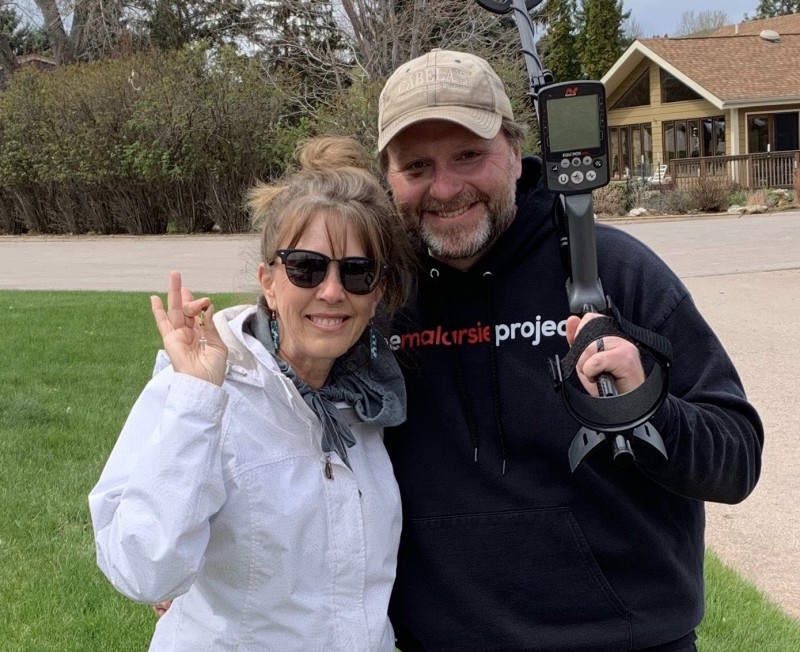

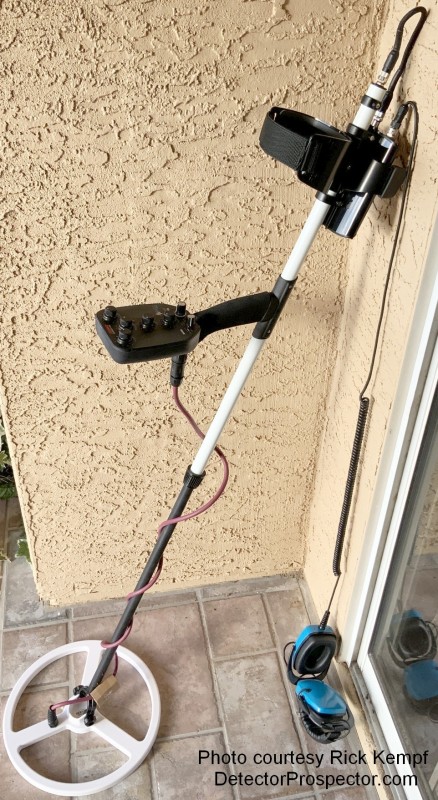



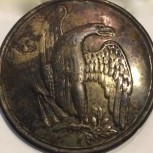
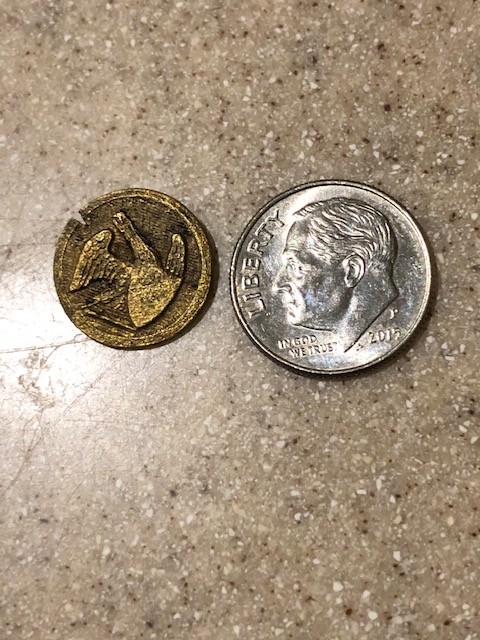
.thumb.jpg.d71314a45f3dc82bf75ac1b96e7e9201.jpg)
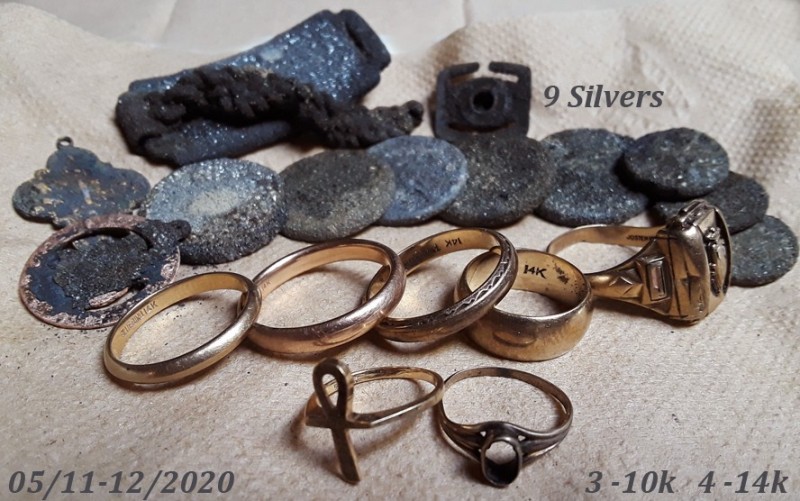
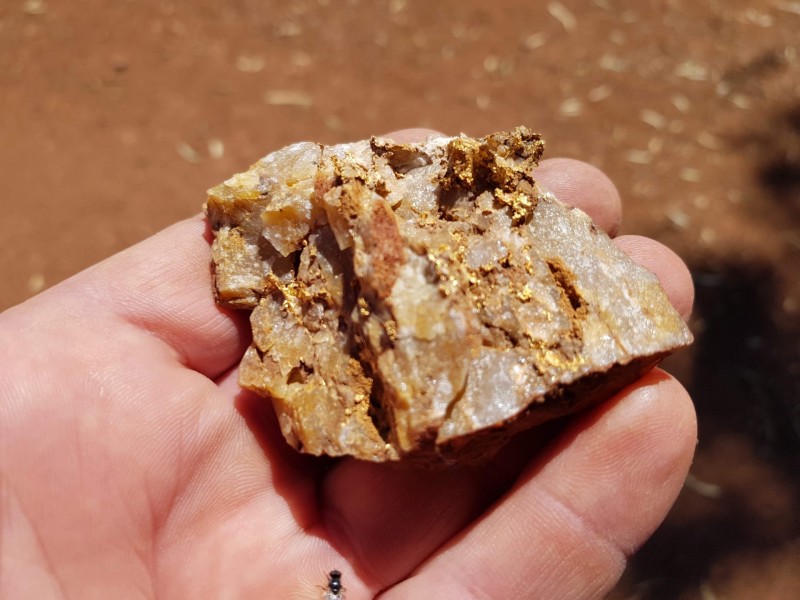
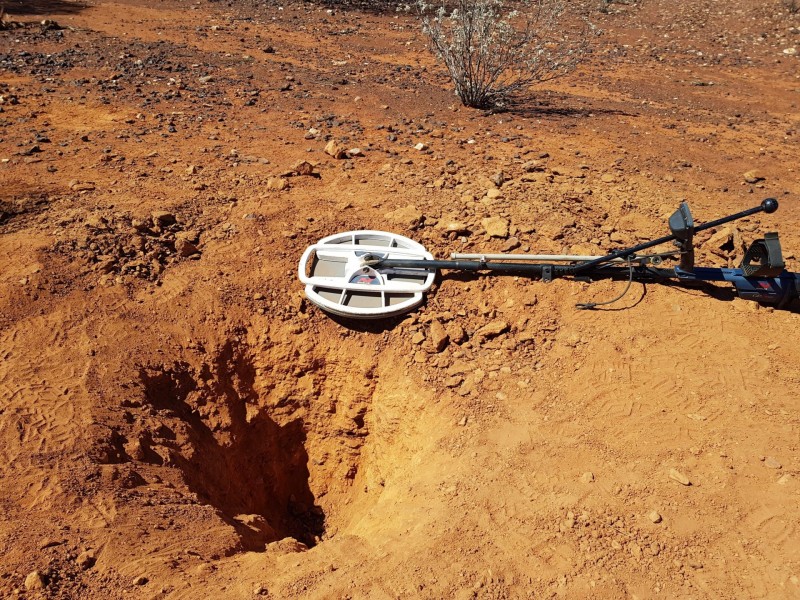
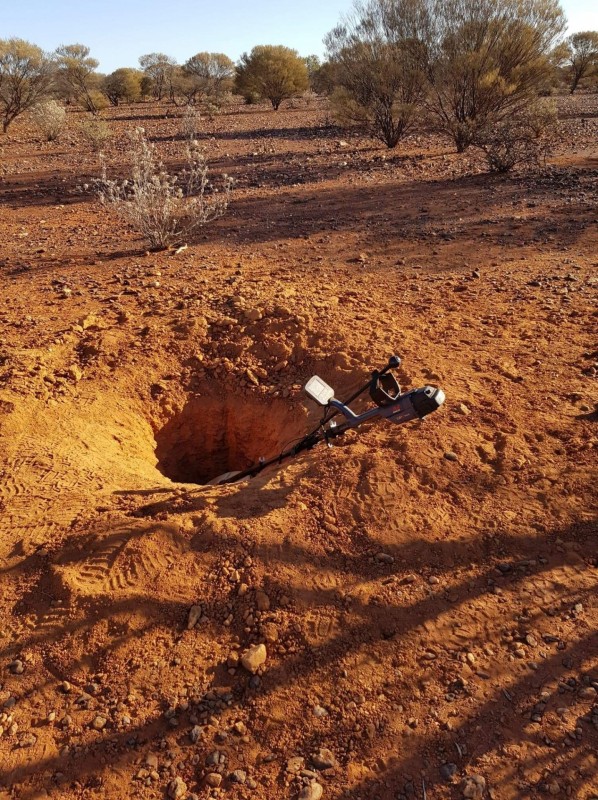
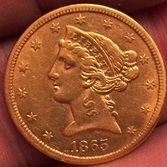


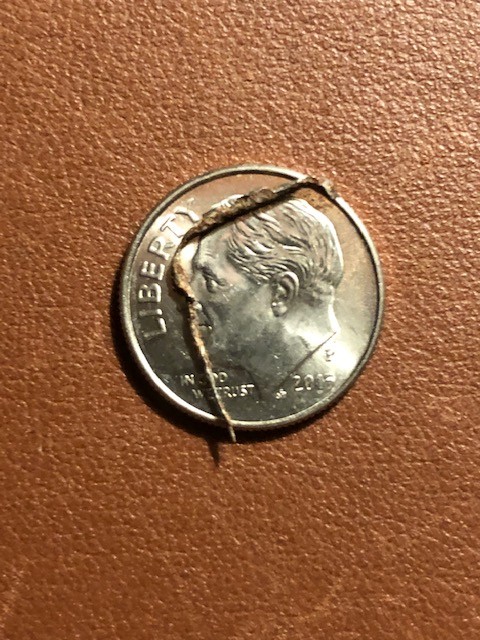
.jpg.d36fcd52325fe8a6a366d3944c8806e4.thumb.jpg.7439025c7a6d125b76c4d4495030cde4.jpg)
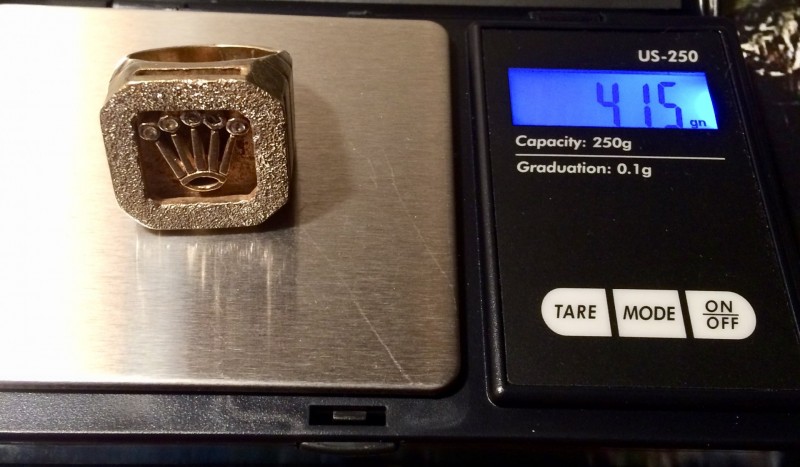


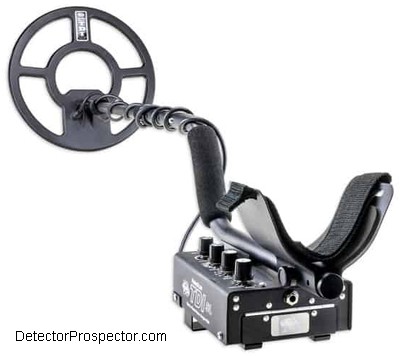
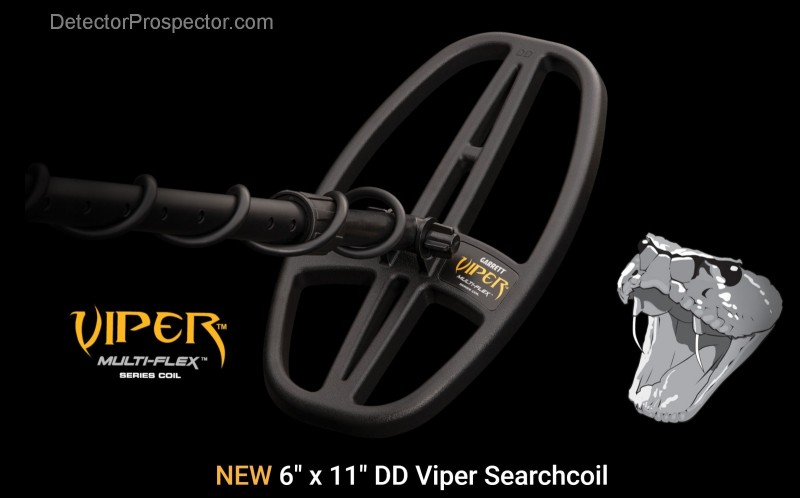


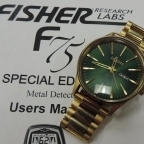
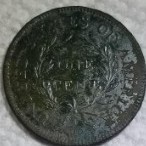
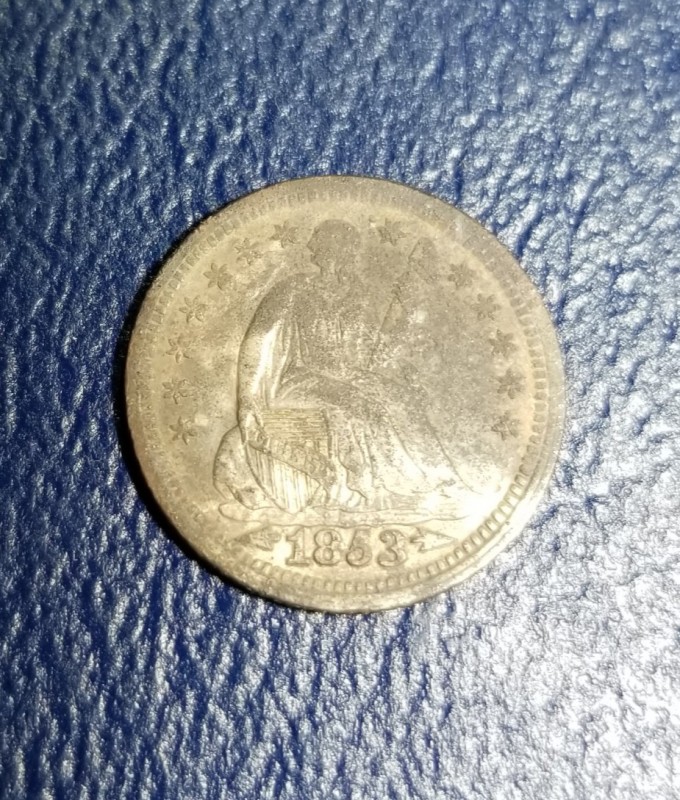
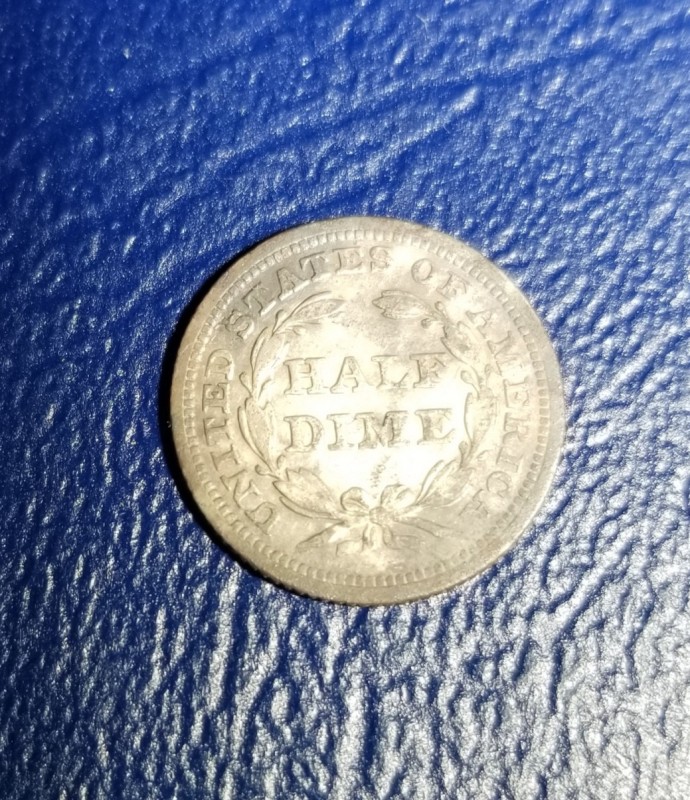
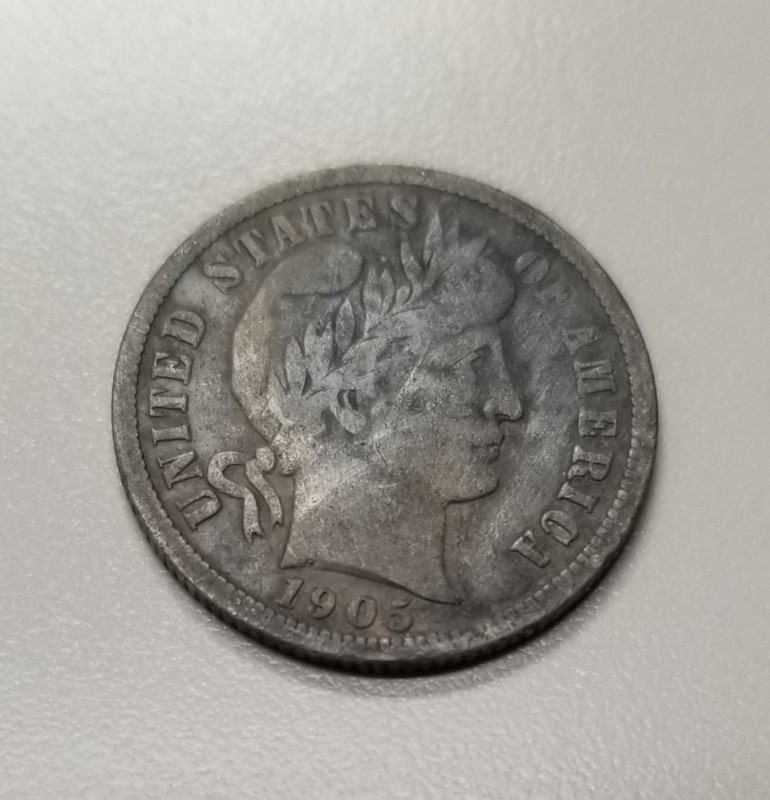
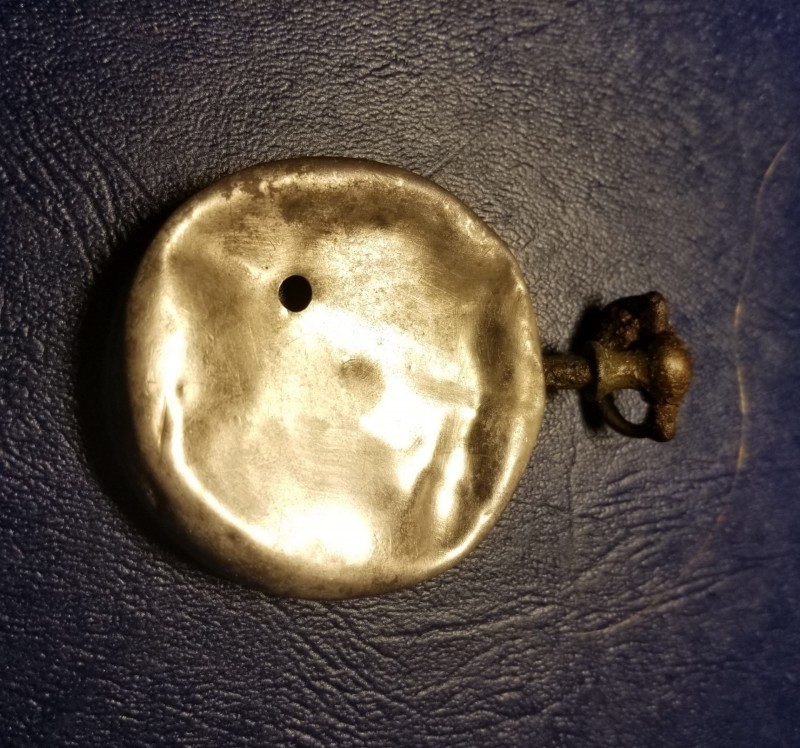
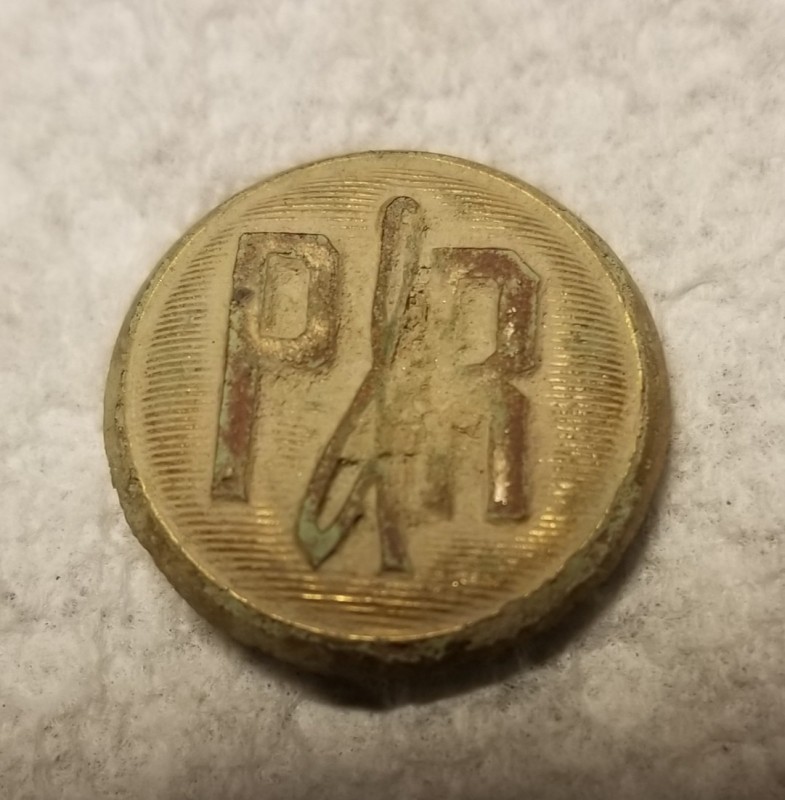
.thumb.jpg.e8d7b39b96d3bbc7d099c28c1d81fea1.jpg)
